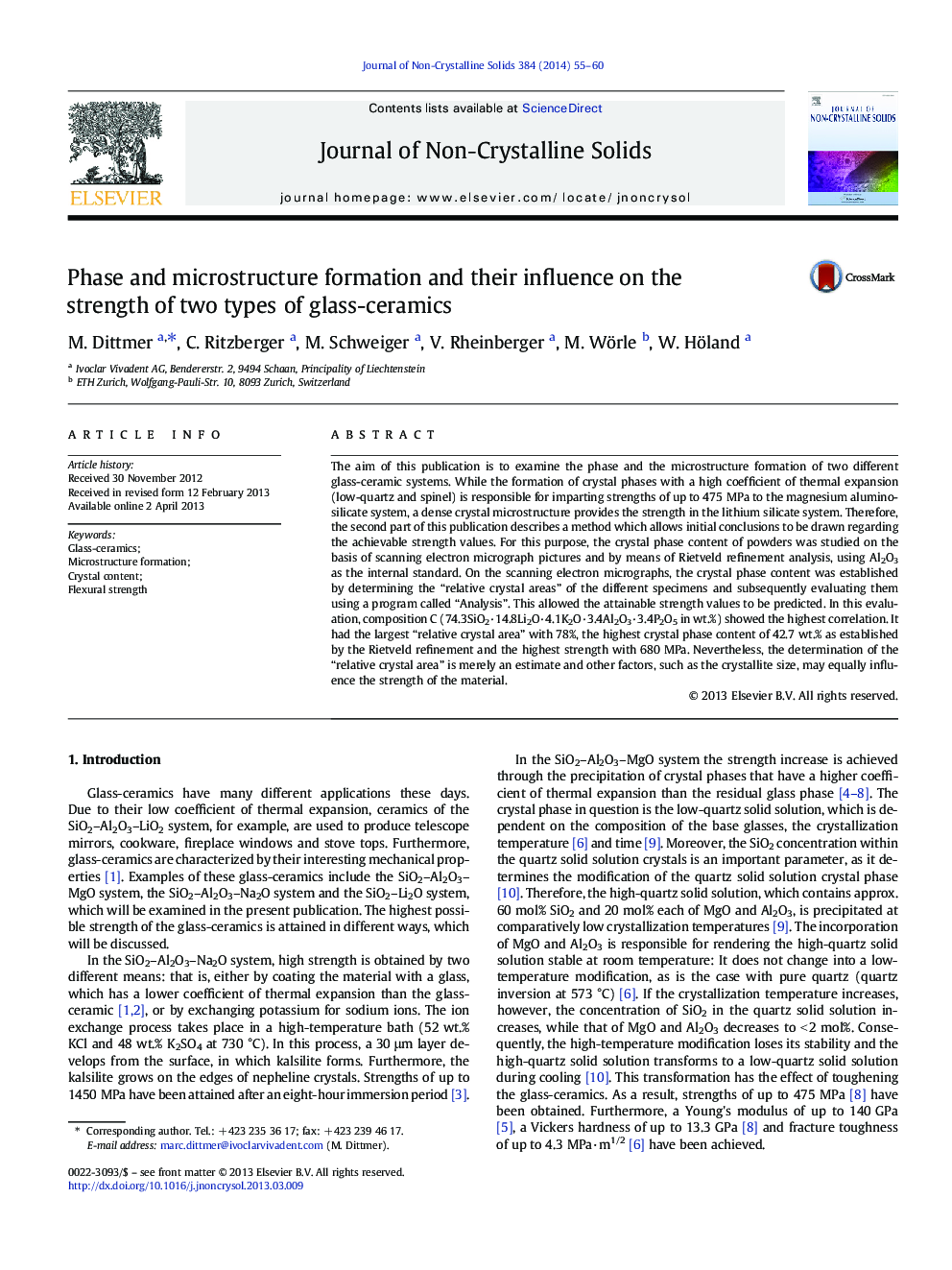| Article ID | Journal | Published Year | Pages | File Type |
|---|---|---|---|---|
| 1481125 | Journal of Non-Crystalline Solids | 2014 | 6 Pages |
•Report on relationship between microstructure and strength•High-strength SiO2-Al2O3-MgO glass-ceramics by low-quartz•High-strength SiO2-Li2O glass-ceramics by interlocking microstructure•Positive correlation of crystal content, micro-images and strength
The aim of this publication is to examine the phase and the microstructure formation of two different glass-ceramic systems. While the formation of crystal phases with a high coefficient of thermal expansion (low-quartz and spinel) is responsible for imparting strengths of up to 475 MPa to the magnesium aluminosilicate system, a dense crystal microstructure provides the strength in the lithium silicate system. Therefore, the second part of this publication describes a method which allows initial conclusions to be drawn regarding the achievable strength values. For this purpose, the crystal phase content of powders was studied on the basis of scanning electron micrograph pictures and by means of Rietveld refinement analysis, using Al2O3 as the internal standard. On the scanning electron micrographs, the crystal phase content was established by determining the “relative crystal areas” of the different specimens and subsequently evaluating them using a program called “Analysis”. This allowed the attainable strength values to be predicted. In this evaluation, composition C (74.3SiO2·14.8Li2O·4.1K2O·3.4Al2O3·3.4P2O5 in wt.%) showed the highest correlation. It had the largest “relative crystal area” with 78%, the highest crystal phase content of 42.7 wt.% as established by the Rietveld refinement and the highest strength with 680 MPa. Nevertheless, the determination of the “relative crystal area” is merely an estimate and other factors, such as the crystallite size, may equally influence the strength of the material.
